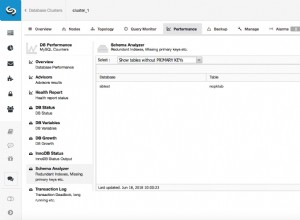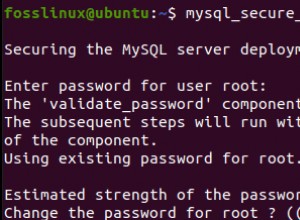Đây là câu trả lời khác của tôi, được mở rộng thành ba cột:
-- Some test data
CREATE TABLE the_table
( id SERIAL NOT NULL PRIMARY KEY
, name varchar
, a INTEGER
, b varchar
, c varchar
);
INSERT INTO the_table(name, a,b,c) VALUES
( 'Chimpanzee' , 1, 'mammals', 'apes' )
,( 'Urang Utang' , 1, 'mammals', 'apes' )
,( 'Homo Sapiens' , 1, 'mammals', 'apes' )
,( 'Mouse' , 2, 'mammals', 'rodents' )
,( 'Rat' , 2, 'mammals', 'rodents' )
,( 'Cat' , 3, 'mammals', 'felix' )
,( 'Dog' , 3, 'mammals', 'canae' )
;
-- [empty] table to contain the "squeezed out" domain {a,b,c}
CREATE TABLE abc_table
( id SERIAL NOT NULL PRIMARY KEY
, a INTEGER
, b varchar
, c varchar
, UNIQUE (a,b,c)
);
-- The original table needs a "link" to the new table
ALTER TABLE the_table
ADD column abc_id INTEGER -- NOT NULL
REFERENCES abc_table(id)
;
-- FK constraints are helped a lot by a supportive index.
CREATE INDEX abc_table_fk ON the_table (abc_id);
-- Chained query to:
-- * populate the domain table
-- * initialize the FK column in the original table
WITH ins AS (
INSERT INTO abc_table(a,b,c)
SELECT DISTINCT a,b,c
FROM the_table a
RETURNING *
)
UPDATE the_table ani
SET abc_id = ins.id
FROM ins
WHERE ins.a = ani.a
AND ins.b = ani.b
AND ins.c = ani.c
;
-- Now that we have the FK pointing to the new table,
-- we can drop the redundant columns.
ALTER TABLE the_table DROP COLUMN a, DROP COLUMN b, DROP COLUMN c;
SELECT * FROM the_table;
SELECT * FROM abc_table;
-- show it to the world
SELECT a.*
, c.a, c.b, c.c
FROM the_table a
JOIN abc_table c ON c.id = a.abc_id
;
Kết quả:
CREATE TABLE
INSERT 0 7
CREATE TABLE
ALTER TABLE
CREATE INDEX
UPDATE 7
ALTER TABLE
id | name | abc_id
----+--------------+--------
1 | Chimpanzee | 4
2 | Urang Utang | 4
3 | Homo Sapiens | 4
4 | Mouse | 3
5 | Rat | 3
6 | Cat | 1
7 | Dog | 2
(7 rows)
id | a | b | c
----+---+---------+---------
1 | 3 | mammals | felix
2 | 3 | mammals | canae
3 | 2 | mammals | rodents
4 | 1 | mammals | apes
(4 rows)
id | name | abc_id | a | b | c
----+--------------+--------+---+---------+---------
1 | Chimpanzee | 4 | 1 | mammals | apes
2 | Urang Utang | 4 | 1 | mammals | apes
3 | Homo Sapiens | 4 | 1 | mammals | apes
4 | Mouse | 3 | 2 | mammals | rodents
5 | Rat | 3 | 2 | mammals | rodents
6 | Cat | 1 | 3 | mammals | felix
7 | Dog | 2 | 3 | mammals | canae
(7 rows)
Chỉnh sửa:Điều này có vẻ hoạt động đủ tốt và tôi ghét phải nhìn thấy sự phản đối mà tôi đặt ở đó, chỉnh sửa vô dụng (CrazyCasta).




